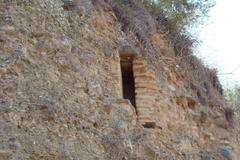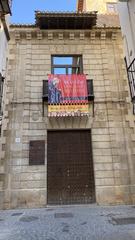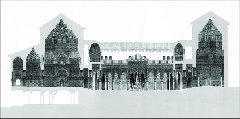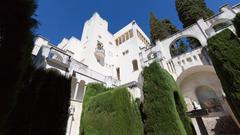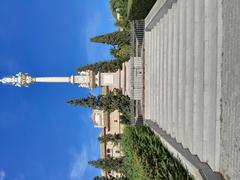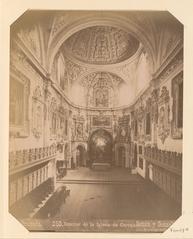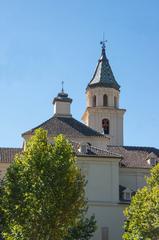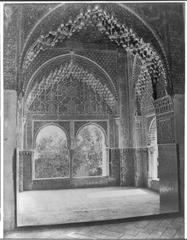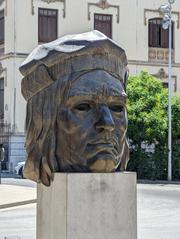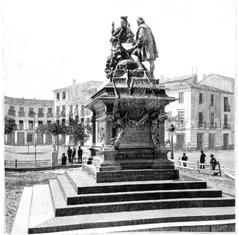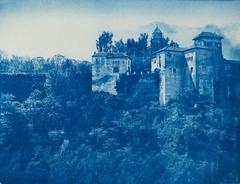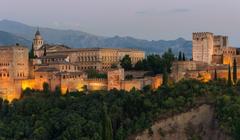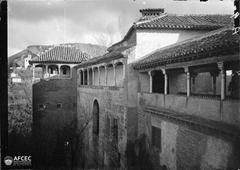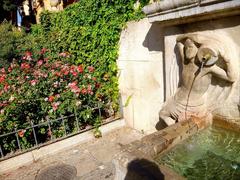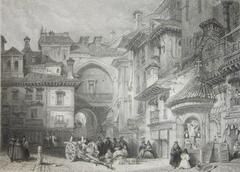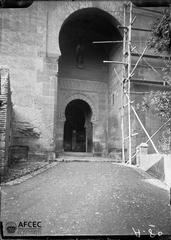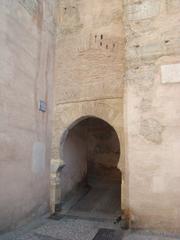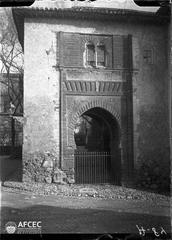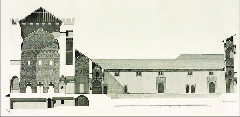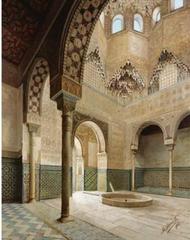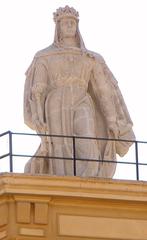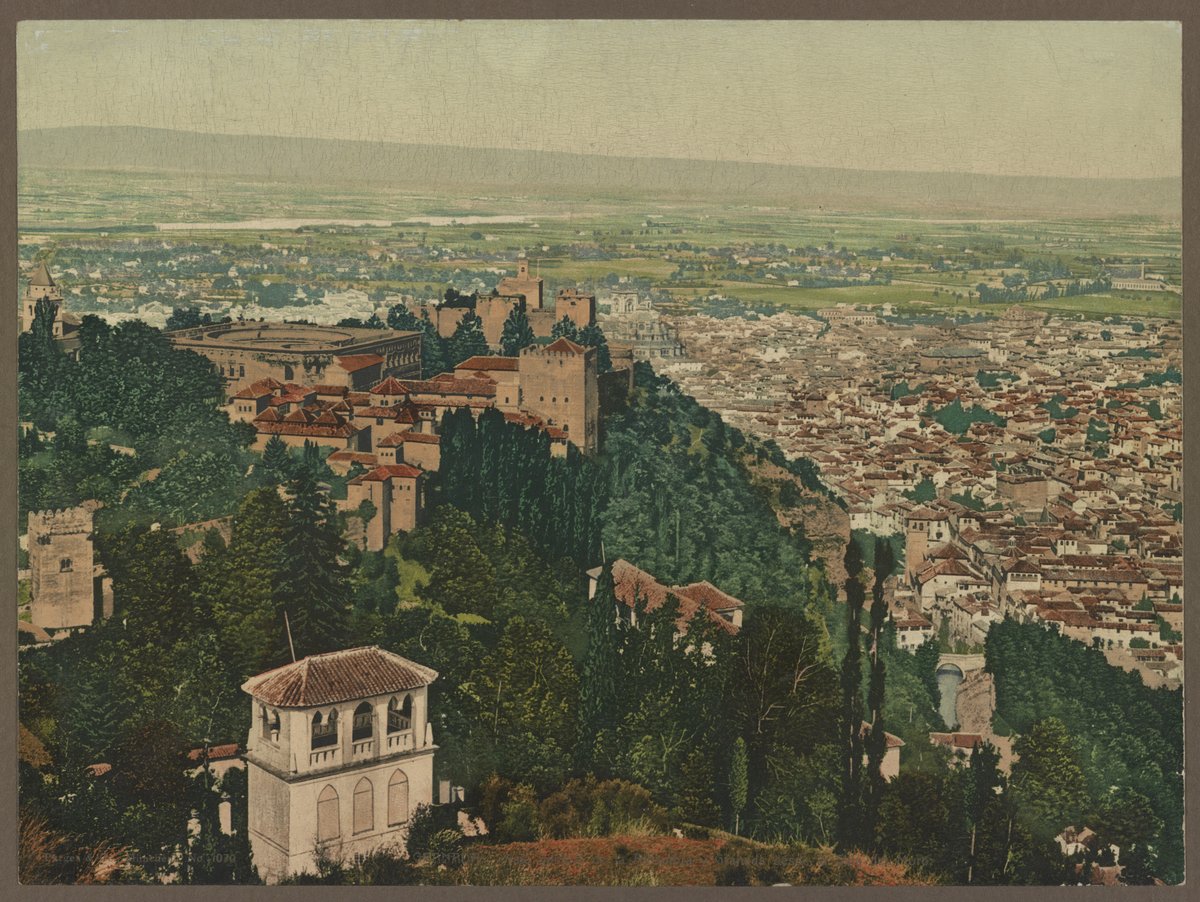
Visiting Silla del Moro: History, Tickets, and Tips
Date: 19/07/2024
Introduction
Nestled in the heart of Granada, Spain, the Silla del Moro, or ‘Moor’s Chair,’ stands as a testament to the city’s rich and diverse history. This historical site, perched on the Sabika Hill, offers visitors a unique opportunity to explore the remnants of the Nasrid period, the last Muslim dynasty in the Iberian Peninsula. Originally constructed as a fortress or watchtower, the Silla del Moro provided strategic oversight of the Alhambra and the Generalife gardens, playing a crucial role in the defense of the Nasrid rulers (Patronato de la Alhambra y Generalife).
The significance of the Silla del Moro extends beyond its military functions. Its architectural design reflects the needs of its time, featuring robust stone walls and a strategic hilltop location that offers panoramic views of Granada. During the Reconquista, when Christian kingdoms sought to reclaim territories from Muslim rule, the site became a pivotal military outpost. Captured by the Catholic Monarchs in 1492, it marked the end of Muslim rule in Spain and continued to serve as a defensive structure for the new rulers (Granada Tourism).
Today, the Silla del Moro is a symbol of Granada’s rich Islamic heritage and a popular tourist destination. Recent restoration efforts have preserved its historical integrity, allowing visitors to experience its original architectural features and breathtaking views. This comprehensive guide aims to provide all the essential information for visiting the Silla del Moro, from its historical significance to practical details like visiting hours, ticket prices, and travel tips.
Table of Contents
- Introduction
- Historical Background
- Visitor Information
- Special Events and Guided Tours
- Photographic Spots
- FAQ Section
- Conclusion
- References and Further Reading
Historical Background
Origins and Early History
The Silla del Moro, a historical site in Granada, Spain, traces its origins to the Nasrid period, the last Muslim dynasty in the Iberian Peninsula, which ruled from the 13th to the 15th centuries. Initially built as a small fortress or watchtower, it was strategically positioned to oversee the Alhambra and the Generalife gardens, ensuring the safety and security of the Nasrid rulers.
Architectural Significance
Reflecting the military and strategic needs of its time, the Silla del Moro features robust stone walls and a minimalistic design. Its hilltop location provided panoramic views of the surrounding area, making it a vital part of the defensive network protecting the Alhambra.
Role During the Reconquista
During the Reconquista, when Christian kingdoms sought to reclaim territories from Muslim rule, the Silla del Moro played a crucial role. In 1492, the Catholic Monarchs, Ferdinand II of Aragon and Isabella I of Castile, captured Granada, marking the end of Muslim rule in Spain. The site continued to serve as a military outpost for the new rulers.
Post-Reconquista Developments
Following the Reconquista, the Silla del Moro was repurposed and integrated into the broader defensive system of the Alhambra. Over the centuries, it experienced periods of neglect and restoration, reflecting Spain’s changing political and social landscape.
Modern-Day Restoration and Preservation
In recent years, the Silla del Moro has undergone various restoration efforts to maintain its historical integrity and make it accessible to the public. Local and national heritage organizations have spearheaded these efforts, recognizing the site’s cultural and historical significance.
Visitor Information
Visiting Hours and Tickets
The Silla del Moro is open to visitors year-round. Typical visiting hours are from 10:00 AM to 6:00 PM, though these may vary seasonally. Tickets can be purchased on-site or online through the official Patronato de la Alhambra y Generalife website. Prices range from €5 to €10, with discounts available for students and seniors.
Travel Tips and Accessibility
Visitors can access the Silla del Moro via a scenic hike from the Alhambra. Comfortable walking shoes and water are recommended. The site is partially accessible to those with mobility challenges, but some areas may be difficult to navigate.
Nearby Attractions
While visiting the Silla del Moro, consider exploring nearby attractions such as the Alhambra, the Generalife gardens, and the historic Albaicín neighborhood. These sites offer a deeper understanding of Granada’s rich history and culture.
Special Events and Guided Tours
The Silla del Moro occasionally hosts special events and guided tours that provide in-depth historical insights. Check the official website for upcoming events and tour schedules.
Photographic Spots
The hilltop location of the Silla del Moro offers breathtaking views of the Alhambra, the Generalife gardens, and the city of Granada. It’s a perfect spot for photography, especially during sunrise and sunset.
FAQ Section
What are the visiting hours for Silla del Moro?
Typical visiting hours are from 10:00 AM to 6:00 PM, but they may vary seasonally.
How much are the tickets for Silla del Moro?
Tickets range from €5 to €10, with discounts available for students and seniors.
Is the Silla del Moro accessible for visitors with mobility challenges?
The site is partially accessible, but some areas may be difficult to navigate.
Conclusion
The Silla del Moro offers a unique blend of historical, cultural, and environmental significance, making it a must-visit destination in Granada. Whether you’re a history buff fascinated by its Nasrid origins and role during the Reconquista, or a nature enthusiast drawn to its panoramic views and rich biodiversity, this iconic site has something for everyone. The strategic hilltop location not only provided a defensive advantage but also offers some of the best photographic spots in Granada, especially during sunrise and sunset (Patronato de la Alhambra y Generalife).
For visitors, practical considerations such as visiting hours, ticket prices, and travel tips are crucial for a memorable experience. The site is accessible year-round and offers various ways to reach it, including scenic hikes from the Alhambra, public transport, and taxis. Nearby attractions like the Alhambra, Generalife gardens, and the historic Albaicín neighborhood further enrich the visit, providing a deeper understanding of Granada’s rich history and culture (Granada Tourism).
In conclusion, the Silla del Moro is more than just a historical site; it is a window into Granada’s past, offering insights into its architectural, cultural, and environmental heritage. Whether you’re planning a visit or simply curious about its history, this guide provides all the information you need to appreciate the significance of the Silla del Moro. Don’t forget to stay updated with the latest information by visiting the official website and consider downloading the Audiala app for more insights and updates.

